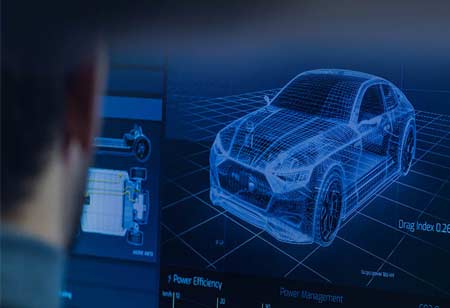THANK YOU FOR SUBSCRIBING
THANK YOU FOR SUBSCRIBING
Be first to read the latest tech news, Industry Leader's Insights, and CIO interviews of medium and large enterprises exclusively from Auto Tech Outlook

By
Auto Tech Outlook | Saturday, July 02, 2022
Stay ahead of the industry with exclusive feature stories on the top companies, expert insights and the latest news delivered straight to your inbox. Subscribe today.
All connected vehicles are susceptible to cyberattacks, with hackers capable of interfering with critical operations such as steering, braking, and speed.
FREMONT, CA: Cybersecurity is now intrinsically tied to autonomous car safety. Extremely strong cybersecurity is required to safeguard future road users, whether in fully or nearly autonomous vehicles.
As in any sector, appropriate standards assist original equipment manufacturers in verifying their work in the eyes of regulators and the market. ISO/SAE 21434, which provides a structured approach to guarantee that cybersecurity concerns are incorporated into automotive products, is now the most critical cybersecurity standard in the automobile industry. It stipulates that automobile manufacturers and suppliers must demonstrate due diligence in cybersecurity engineering and that cybersecurity management must be applied throughout the supply chain.
Pursuing more excellent road safety is crucial to develop higher degrees of driving automation, as specified by the SAE J3016 standard for levels of driving automation.
Today, numerous automobiles on the road are equipped with driver-assistance technologies up to Level 2. Higher tiers include lane centering and adaptive cruise control. The situation becomes more intriguing at Levels 3, 4, and 5, which specify autonomous driving modes in which the driver is no longer in charge.
This evolution presents several promising opportunities. A human mistake can be eliminated from driving by definition. As this is the leading cause of motor vehicle collisions, the promise of a decrease in fatalities and serious injuries is encouraging.
Conversely, individuals might find it difficult to surrender control to a machine. Indeed, it is a significant leap of faith to place the essential trust in the technology, to sit back and let a robot drive.
The safety of automated driving technologies is undoubtedly a worry. Historically, electrical and electronic systems in automobiles have been governed by the functional safety standard ISO 26262. Conforming systems can ensure a high level of resilience in the case of system or component failure. However, autonomous driving technology introduces the possibility of system faults, such as erroneously understanding a road scenario. What would happen, for instance, if sensors were suddenly "blinded" by reflections or sunlight?
Automated driving systems can present dangers even without a system malfunction. Therefore, while the application of ISO 26262 is necessary, it is no longer adequate.
Novel approaches and difficulties
The standard ISO/PAS 21448:2019 details a new approach to safety, the safety of the intended function (SOTIF), specifically designed to address the issues posed by automated driving.
However, there exists a further possible threat to the safety of autonomous driving. As vehicle makers strive to software define their products for flexibility and connect them to the cloud for customer convenience, cyberattacks pose a severe risk.
A hacker's objective could be as simple as stealing user data such as passwords, credit card information, or intellectual property. For failing to protect client privacy, a car manufacturer may incur monetary damage and fines.
In addition, hacking automobiles can endanger human lives and safety. The infamous test hacking of a Jeep Cherokee, in which the hacker seized control of the car while it was driving on a highway and rendered the driver impotent, demonstrated clearly that this is a severe problem.
Without sufficient cybersecurity, typical x-by-wire systems controlled by humans are insecure. Even if the driver can maintain partial control of the vehicle, the possibility is unsettling. In a car with no steering wheel or pedals, the occupants are at the whim of an unseen, remote cyber-assailant.
Connected, software-defined automobiles of today are no longer separate, protected entities that may be regarded as functionally secure just by complying with ISO 26262. Automated driving has increased the stakes, bringing the hazard-based SOTIF methodology into the safety mix.
Due to the risk of hacking automobiles, cybersecurity and safety are now inexorably connected.
 Copyright © 2025 AutoTech Outlook. All Rights Reserved | Privacy Policy | Subscribe | Sitemap | About us | Feedback Policy | Editorial Policy
Copyright © 2025 AutoTech Outlook. All Rights Reserved | Privacy Policy | Subscribe | Sitemap | About us | Feedback Policy | Editorial Policy 



